Newsletter
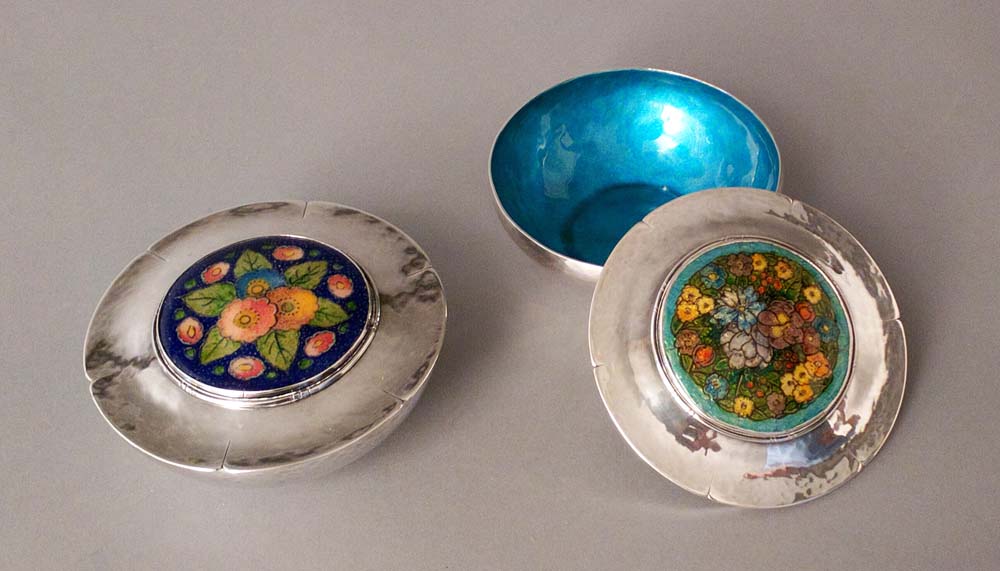
Two covered boxes. Sterling silver and Limoges enamel. - Gertrude S. Twichell (c. 1889-after 1938)
Several art enamel works in the Two Red Roses Collection were crafted by two Master women metalsmiths—Gertrude S. Twichell and Elizabeth E. Copeland. Twichell (c. 1889–after 1938), who studied with Laurin H. Martin (1875-1939), joined the Society of Arts and Crafts, Boston (SACB), in 1916 as a Craftsman member and was elevated to Master status in 1927. Copeland (1866–1957) attended the Cowles Art School in Boston in 1900, and also studied metalsmithing with Martin, as well as traveling to England to study with Alexander Fisher (1864-1936). She joined the SACB in 1901 and was elevated to the rank of Master in 1910. In 1916, Copeland was awarded Boston’s Medal of Excellence, the most prestigious craft award in the country at the time. She did not stop working until 1937 when she was in her early 70s.
Nature was deemed to be the basis of good design throughout the reform movements of the Arts & Crafts era. Here, Twichell created works glorifying nature through depictions of colorful flowers and foliage. In one box, she has massed flowers, leaves, and berries together, surrounded by a single-color wreath of tiny flowers and leaves. The floral elements of the main design are rendered in a naturalistic fashion, including veining in the leaves and light lines against a dark background that serve to define and separate petals, leaves, and individual berries. For the other box, Twichell designed a stylized arrangement of leaves with realistic blossoms in its center, set against a vibrant, deep blue background. The cover edges of both boxes are notched, creating rims that suggest the tips of flower petals, in keeping with the overall aesthetic of the designs.
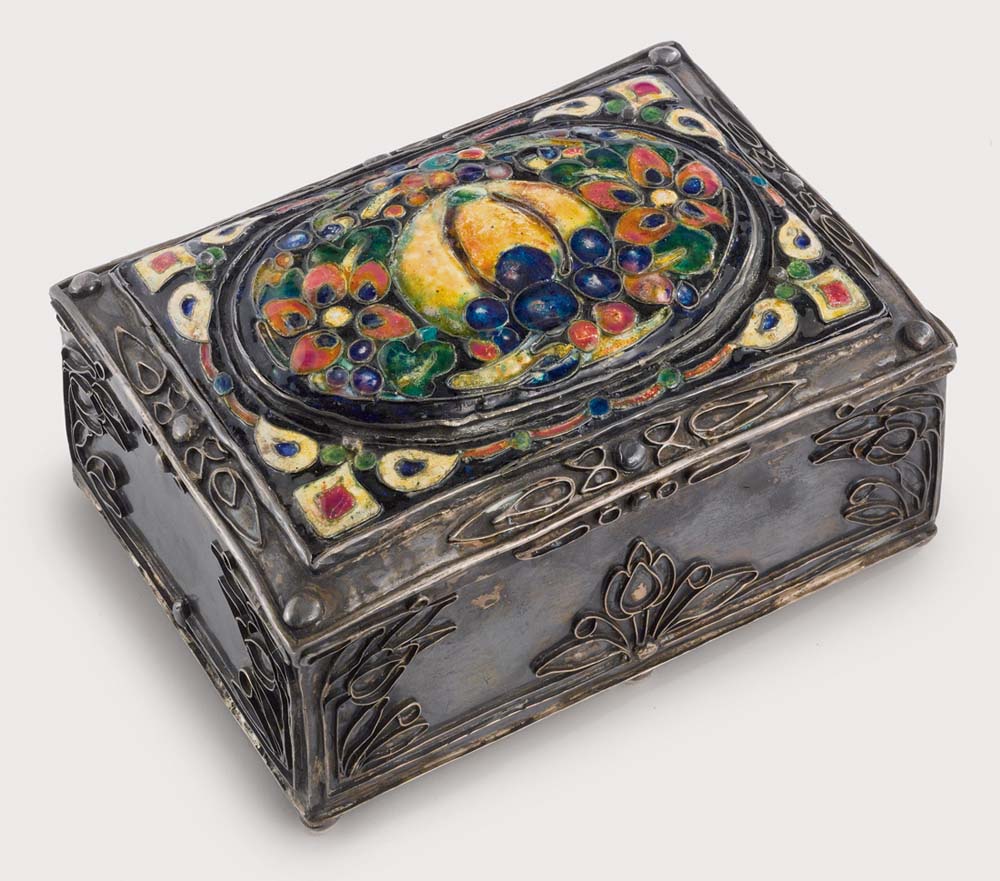
Silver box with foliate decoration and enameled lid. 3¾ x 7½ x 5¼ in., C. 1910-1937. Elizabeth S. Copeland
Decoration of every aspect of a box—top and sides—is one of Copeland’s hallmarks. She joined pieces of flat sheet silver to form her containers, rather than raising them up by hammer. Each piece was worked on separately for ease in applying decoration, after which she soldered them together.
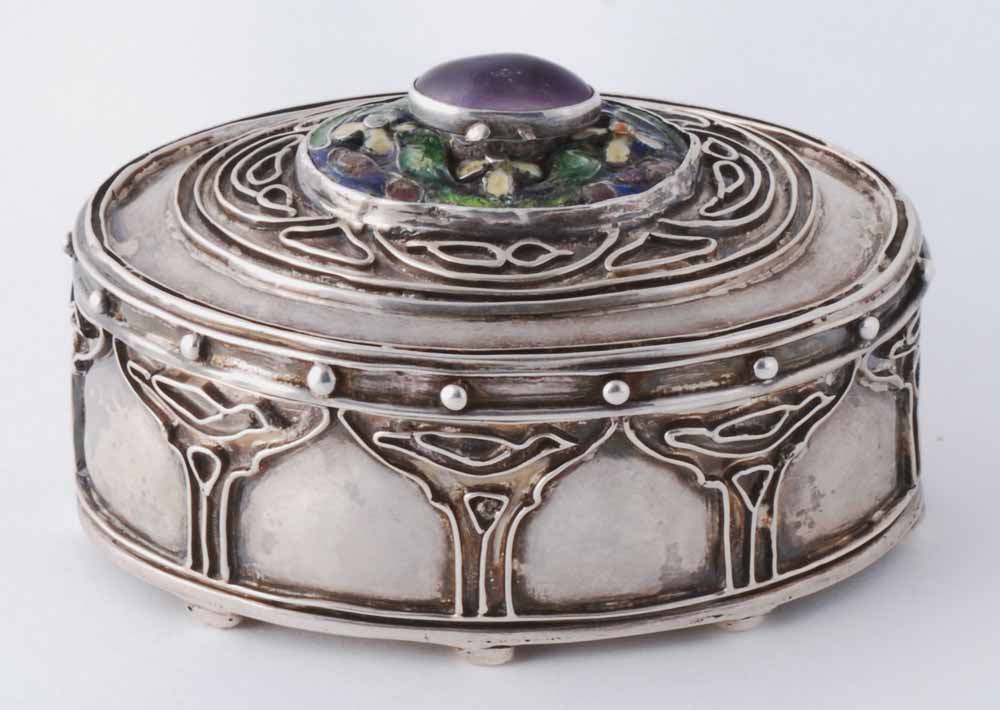
Oval hinged box. Silver, enamel, amethyst, silver wirework, semiprecious stones. 2¾ x 4½ x 3¼, 1918, Elizabeth S. Copeland
Color was Copeland’s muse, as is abundantly clear in this rectangular box from the TRRF Collection. Although some writers have assigned different methods of enameling to her work, her approach was so inventive that it defies categorization. Copeland incorporated wire-like strips of silver soldered to the flat silver surface, forming outlines for the individual components of her chosen design. The outlines were often not joined together, but separated with space between them, as in stencil work, and were filled with various colored enamels against a solid enamel background. The technique is evident in this box with its central oval of fruit and flowers. Copeland continued to apply strips, creating designs in other parts of the box, including a border around the edges of the cover, and stylized flower and leaf forms on the front and sides. These were not filled with enamel. Such applied work is seen in many of Copeland’s pieces.
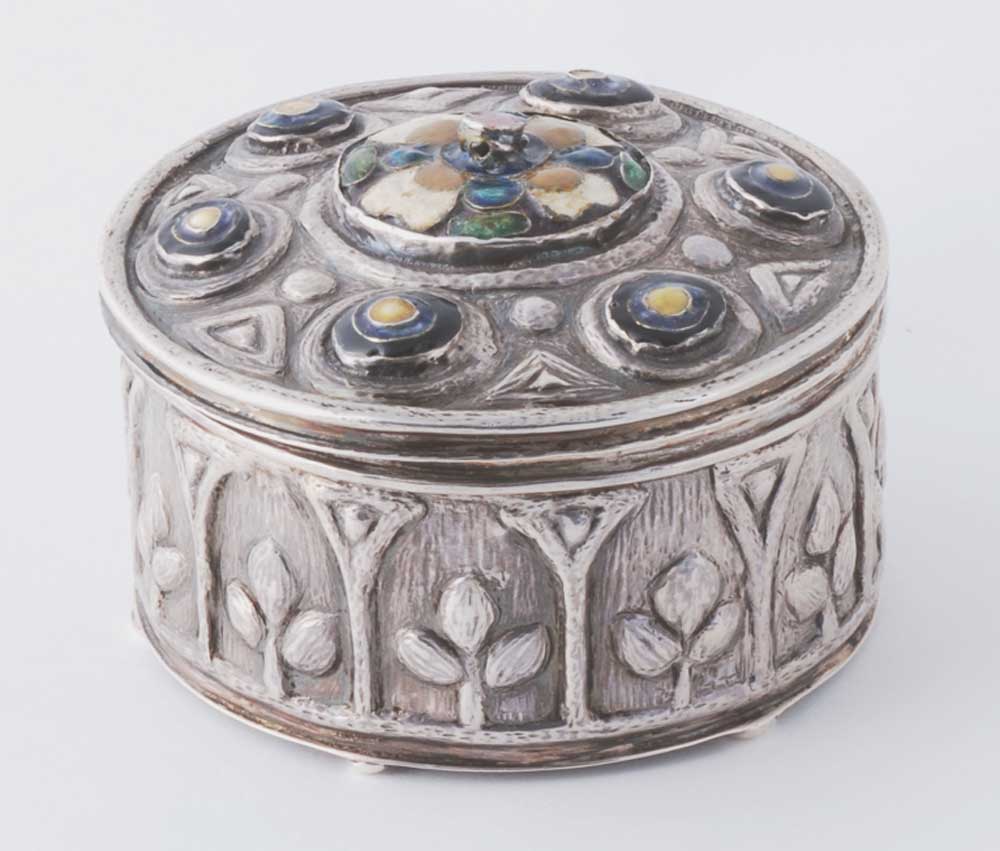
Round hinged box - Silver, enamel, repousse work. 2 ¾ x 4 ½ diam. C 1903-1907. Elizabeth S. Copeland
Two more of Copeland’s boxes from the collection of the TRRF were crafted in a manner similar to that of the rectangular box. In the shorter example, silver strips outlining stylized birds nesting in trees are applied all around the side. (Birds were one of Copeland’s favored design subjects.) The cover is built up in layers, terminating in small enameled flower and leaf forms and topped by an amethyst cabochon set as a knob.
The taller box reveals another of Copeland’s finely honed metalsmithing skills. Here, she used her tools to create a stylized landscape design around its side, with a background of chased, irregularly striated lines suggesting water. Bordering it are crisply repousséd trees and flowers, similarly chased. Oxidation of the silver in the recesses of the chased lines gives the box a matte grey, misty appearance; the colors chosen for the enameled cover are also of a restrained, somewhat muted quality. Overall, one may describe this box as a quiet work of technical mastery.
Rosalie Berberian, 2016
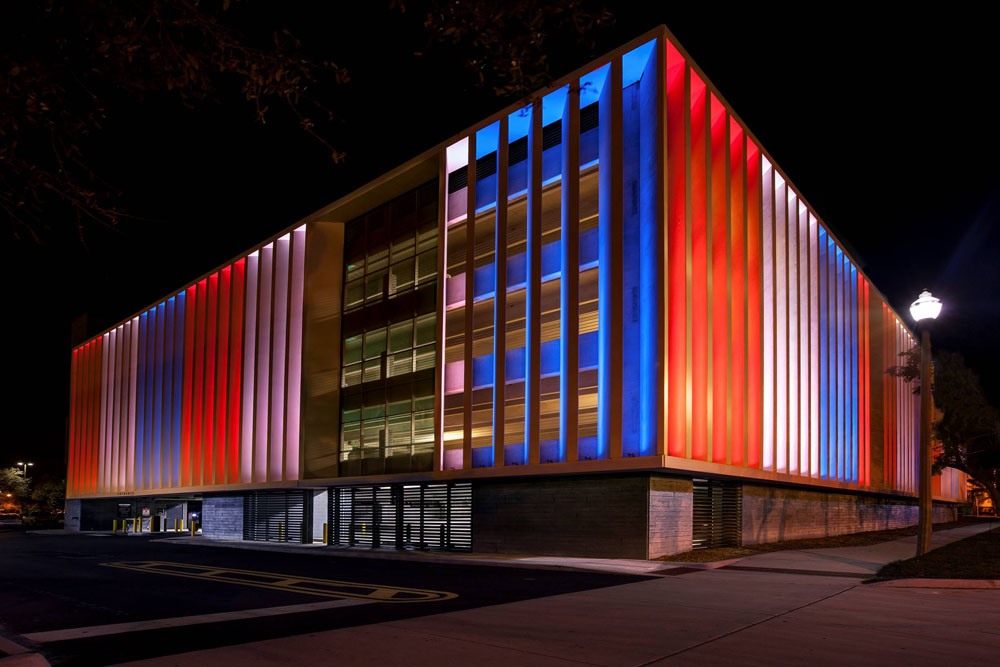
MAACM Parking Garage - American Flag Colors
The MAACM Parking Garage located at 355 3rd. Street North, St. Petersburg, opened recently with flair. Designed with the knowledge that it is the forerunner to the Museum of the American Arts and Crafts Movement it had to be special. It had to be memorable. It will, after all, connect the traveling museum goer with the MAACM experience. This is no ordinary parking garage.
The five story structure with its soaring exterior vertical concrete louvers comes to dazzling life nightly through a unique and sophisticated lighting system. Powerful LED light fixtures placed at the bottom of each louver blanket the garage in a vibrant array of color.

MAACM Parking Garage - St. Patrick's Day Colors
From a remote location the operator can program literally hundreds of color combinations to celebrate news, a special event, exhibition, or holiday. During regular evenings the garage will be awash in warm white light. This is no ordinary parking garage.
The MAACM Parking Garage is open to the public and is complete with security cameras, state-of-the-art credit card processing systems and listed in the popular Park Mobile application that allows users to pay in advance for parking spaces. There are also monthly individual and group rates available.